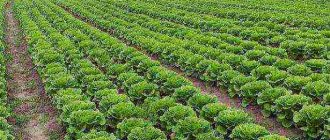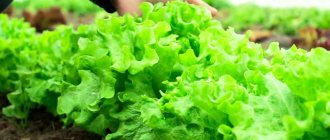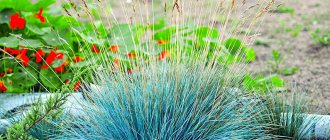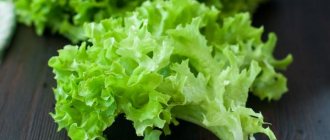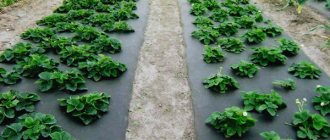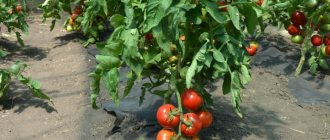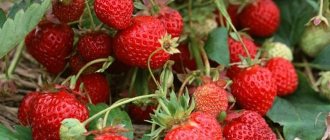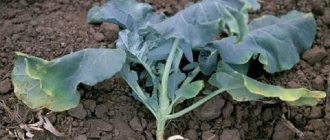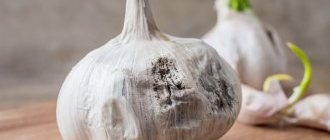Description
Chicory salad is the popular name for the vegetable. The herbaceous plant has cultural varieties. Only three of them are grown in summer cottages:
- Endive - curly, with cut leaves.
- Witloof - the leaves are wide, the head is large, similar to romaine lettuce.
- Escarole - a rosette is formed by wide, uncut leaves, on the surface of which there are fleshy veins.
Salad chicory belongs to a large family with a beautiful name - “daisies”. This plant has a head and green leaves. Endive lettuce is characterized by curling leaves with rich color. Because of this, it is very similar to a regular salad. But this is a salad vegetable.
The bitter taste of endive does not allow it to be classified as the most popular variety of lettuce, however, today it is widespread in America and Europe. Here it is valued and eaten in large quantities.
The chicory, the photo of which you see, is a cream-colored head of cabbage with splashes of green. The leaves are smooth, not dissected at the top. The head of cabbage reaches a length of twelve centimeters.
What are endive salads?
Chicory lettuce is an annual, biennial or perennial herbaceous plant from the Asteraceae family, which in the first year of life forms a basal rosette of large leaves ranging from pinnately pinnate to entire. The flowering stem is erect, branched, up to 150 cm high, with sessile, stem-encompassing leaves, formed in the second year of life. The flowers are small, reed, blue, blue, lilac or white, collected in numerous axillary inflorescences of the basket, bloom in July-September. The fruits are achenes and ripen in August-September.
The varieties are especially decorative:
Pinnately dissected Yellow (leaves are yellow, reddish-brown along the main vein, dissected into symmetrical lobes),
Yellow Curly (the rosette is more compact than the previous one, leaves with a strongly wavy edge),
Website photo used: shakherezada.livejournal.com
Green Curly (leaves are wide, repeatedly pinnately dissected into asymmetrical lobes, the edge of the leaf is scalloped and wavy).
Application
Chicory salads are cultivated vegetable, medicinal, and ornamental plants. In therapeutic and preventive nutrition, fresh young leaves (salads), bleached to reduce bitterness, are used, which saturate the body with vitamins, improve digestion, and the activity of the cardiovascular system. Recommended for cholelithiasis.
Accommodation at the dacha
“Green carousels” will look good in the foreground in flower and vegetable mixborders (flower beds) and beds. After the crop has been fully used, the vacated spaces must be decorated with plants of a similar habit and texture. The distance between plants is 20-25 cm, the seeding depth is 1-1.5 cm. They prefer fertile, moist soils with a neutral reaction.
Do you grow endive salads in your dacha? In open ground or greenhouse? What varieties? We’ll talk about the “brother” of endive and escarole, witloof, in the next article.
Common leaf chicory, witloof (Cichorium intybus var. foliosum)
Botanical information: A biennial plant with thick, fleshy roots, which in the first year of life forms a raised rosette of dark green obovate, oval or broadly oval, cascading leaves with wide, often edged petioles. Some forms tend to form heads.
Particularly decorative varieties are: - Broad-leaved (leaves are yellowish-green or green with anthocyanin veins or spots), - Semi-headed (leaves are yellowish-green or green, tending to curl in the center of the rosette, forming a loose head of cabbage).
ApplicationCultivated vegetable, medicinal, highly ornamental plant. In therapeutic and preventive nutrition, fresh, boiled, stewed leaves or leafy heads (salads, side dishes) are used, which improve digestion, the activity of the cardiovascular system and hematopoietic organs.
Placement in the country Planted similarly to other endive salads. The distance between plants is 15-18 cm, the seeding depth is 2-3 cm. Loamy soils are preferred.
Location and lighting
It is best to choose areas for sowing where potatoes or cabbage previously grew. It is recommended to plant in a sunny, well-lit place.
In spring, it is necessary to create artificial shading for the plant. You should not plant endive next to poplars, as they have a common pest - the root louse.
Sowing seeds
It is recommended to plant seed from the second ten days of June until mid-July. If you sow the plant earlier, it will begin to grow, but will not form heads.
When sown in later periods, the heads of cabbage will grow very small. Seeds should be placed in beds to a depth of approximately 1–1.5 cm. The distance between beds should be approximately 30 cm
Growing
Salad chicory, which is grown in winter in boxes, at home or in greenhouses, is valued for its rhizomes and heads, and most importantly, for the opportunity to obtain a fresh and healthy vegetable in cold weather. Lettuce chicory is grown in two stages:
- First, seeds are sown, from which root crops are obtained.
- In the next stage, root crops are planted in the ground. Heads of cabbage are grown from them.
For comfortable growth of chicory, loamy, well-fertilized soils are needed, which are prepared in the fall. To do this, add manure or rotted compost to them, one or two buckets per square meter of area. Superphosphate and nitrophoska are good fertilizers. It is enough to apply one to three spoons of these fertilizers to the same area of land.
Whitening is the most important procedure
When the rosette of leaves becomes large enough and spreading, you should start bleaching the leaves. Bleaching improves the taste of endive salads. This is the most important operation when growing endive. Typically, bleaching is carried out 2–2.5 months from the day the seedlings are planted in a permanent place, when the leaves reach their maximum size. By bleaching, the inner leaves of endive become yellow-green and brittle, acquiring a delicate flavor with minimal bitter substances. To do this, the leaves are tied at the top of the rosette with a cord so that light does not penetrate to the inner leaves. For this operation, choose dry, sunny weather. It is important that there are no drops of dew or rain left on the inner leaves, because... this can cause leaf rot and crop loss.
In summer, the bunches are kept in the dark for 3 weeks, in the fall - up to 5 weeks, until white-yellow leaves grow in their center, collected in a dense head. At this time, plants must be protected from moisture getting on the leaves.
A bed of endive can also be covered with black film stretched over the frame or the plants can be shaded with tightly packed boxes. Such a shelter not only allows you to bleach the endive, but also protects it from rain.
You don’t have to bleach the endive, in which case you will get a spreading, beautiful rosette of green, feathery leaves that are perfect for preparing various dishes, but the bleached leaves are much more tender.
Bleached rosettes are poorly stored, so it is advisable not to bleach all plants at once, but only as needed.
Chicory salad: growing from seeds
The weather will tell you when to plant seedlings. But the best time for this is early spring. Sowing seeds should begin in April and end in May. Before planting, chicory seeds are soaked to swell. Before sowing, the soil is loosened and grooves are made at a distance of sixteen centimeters from each other. The seeds are buried one and a half to two centimeters into the soil. Planting seeds deeply will result in late germination. The distance between seeds should be no more than three centimeters.
When the seedlings sprout, they need to be thinned twice. The first time the distance between each plant should be six centimeters, and the second time – thirty.
The last thinning should be carried out after a month and a half, when the seedlings have grown a little. Maintenance is simple: water on time, avoiding drying out, loosen and weed shallowly.
Features of agricultural technology
Endive can be planted twice a year: in spring and early autumn. Depending on the variety, the ripening process takes from 2 to 3 months. It is strongly not recommended to sow endive in the summer. Like any other variety of salad crops, endive is a short-day plant. For this reason, if the summer is hot and dry, you can’t even dream of a good harvest.
The most favorable temperature for growing endive is the range from +15 to +20 degrees. Despite the fact that the plant reacts positively to the sun, the crop does not grow very well in the heat. In addition, the bitterness in its foliage becomes more pronounced.
Sowing
To grow a decent harvest of endive, the plant must be planted in neutral acidic soil. If the soil is acidic, it must be limed.
Before sowing, you need to make grooves of small depth - from 1 to 22 cm. It is in them that the seeds should then be placed and sprinkled with soil. Growing endive from seeds does not involve a thinning procedure as the plants grow. The optimal distance between individual crops should be from 20 to 30 centimeters.
Some gardeners prefer to replace seed sowing with growing seedlings. This is not the most popular technique, but it has every right to exist. Seeds for seedlings can be sown in early spring. In this case, you should try to keep them at a temperature close to +10 degrees.
Feeding and watering
For a crop like endive lettuce, successful cultivation is impossible without regular watering. But excess water will not benefit the plant.
Important! When watering, do not direct the stream directly to the center of the outlet. It is best to water between rows. In rainy and cold summers, endive may begin to rot.
Its form, like escarole, turns out to be more resistant to excess moisture
In rainy and cold summers, endive may begin to rot. Its form, like escarole, turns out to be more resistant to excess moisture.
As the cultivation progresses, it will not be superfluous to feed the crop with complex fertilizers, which include calcium and nitrogen.
Harvesting and storage
In order for the endive crop to grow from seed without problems, and the harvest not to taste too bitter, about three weeks before harvesting, the plant must be covered with a light-proof material, leaving enough cracks for oxygen to enter.
Cut to the root
The rosettes should be cut at the root and very carefully, avoiding their scattering. With the onset of frost, endive planted in autumn must be dug up together with a large ball of earth (to avoid damage to the root system) and placed indoors or in a greenhouse at a temperature of +10 degrees in containers with sand or earth. This will allow the plant to maintain a fresh appearance. Well-preserved endive will decorate almost any culinary recipe, making it original and non-standard.
Harvesting root crops
After mid-October, lettuce harvesting begins. To do this, you need to dig up the root crops without removing the tops, put them in one pile and leave them on the site for five to six days.
Then the tops are cut off, leaving three centimeters so that the apical bud is not damaged in the future. The soil is not removed from root crops. In this form they are placed in the cellar for storage. The temperature should be no more than two degrees Celsius. Many gardeners immediately plant root crops in the ground without leaving them for storage.
Receiving heads of cabbage
At this stage of cultivation, root crops should be planted in boxes with soil prepared in advance. Planting time is in early November. Garden soil is mixed with peat, compost or turf soil. Other mixtures are also used, for example, soil with sawdust.
The roots will grow in the box. When their length reaches twelve centimeters and their diameter reaches three, the root crops are planted in containers. This work must be done carefully so that the level of location of the processes is the same. After this, the soil is added eighteen to twenty centimeters above the level of the tops.
The box with planted root crops is covered with material that does not allow light to pass through and placed indoors for two weeks. The temperature should be ten to fourteen degrees Celsius. After this period, chicory continues to be grown for another two weeks, but the temperature in the room is raised to twenty degrees.
The growing period for the heads of cabbage lasts a total of twenty-four days. The heads of cabbage grow, their weight is one hundred fifty to one hundred eighty grams.
Growing in the dark leaves its mark - the surface of the heads of cabbage is completely white. Harvesting chicory is easy: just pull it out of the soil. But that is not all. The heads of cabbage need to be cut off, leaving a small part of the root crops, two centimeters is enough. Only after this the lettuce harvest is placed in storage with air temperatures down to zero degrees. The heads of cabbage are immediately packaged with plastic wrap and stored for up to twenty days.
Varieties
The most common varieties are the following:
Milady
Endive of the Milady variety is early ripening and has a dense rosette of vertically arranged openwork leaves. The diameter of the head can reach 30 cm. The weight of one bush is (subject to agricultural practices) 500-600 grams.
Lace
Endive of the Kruzhevo variety is mid-season. The rosette is quite dense and spherical. The leaves are carved and have a malachite green tint. This variety can be planted indoors on a windowsill or on a balcony.
Cake
The variety Cake is also early ripening. Its cultivation is possible both in open ground and in greenhouse conditions (or in an apartment on a windowsill). The rosette of carved leaves is quite lush. In the center of the rosette the foliage is yellow-white, and at the edges it is bright green. Due to its high aesthetic characteristics and decorative properties, Cake endive is often planted as an element of landscape design.
Spring
Endive of the Vesenniy variety is considered early ripening. The plant forms a semi-spreading and semi-erect rosette, characterized by splendor. Its diameter can reach 40 cm. In the center of the rosette the color of the leaves is closer to white, and at the edges it is malachite green.
If any variety of endive is grown and left in the garden, it will produce a “arrow” - a long stem with bluish or white flowers. Seed material is formed on this stem.
Interesting. An endive seed retains the ability to germinate for 7 years.
The most common practice for growing endive lettuce is from seeds rather than seedlings.
Benefits of endive
Chicory salad contains substances with special properties that help cope with many diseases:
- Endive has the ability to have a positive effect on the health of the kidneys and liver. With regular consumption of endive, a powerful effect is achieved: bile stagnation disappears.
- Due to its high vitamin A content, lettuce is used to prevent cancer.
- Chicory is especially useful in the spring, when the human body is depleted of nutrients, especially vitamins C, which are found in large quantities in salad.
- Chicory, the photo of which you see below, is rich in manganese, which is involved in the production of enzymes. And thanks to the high potassium content, the body fights diseases such as hypertension.
- Vitamin B in endive helps people cope with stress, neurological diseases, and mental illness.
- An effective remedy for healing the body is chicory juice. Its use relieves many problems that cause a person to feel unwell: skin rashes and anemia disappear, vision is normalized, and the functioning of the gallbladder is restored.
- The salad juice tastes very bitter. It is not consumed in its pure form, only in combination with the juices of other vegetables. For example, a drink made from the juice of carrots, celery and endive can help reduce the number of asthma attacks. You can prepare other juices: parsley, celery and chicory. This drink is an effective tonic to combat anemia.
What are the beneficial properties of lettuce?
Lettuce is a vegetable crop whose chemical composition is 95% water and protein. The remaining 5% comes from fiber, amino acids and carbohydrates. Vegetable crop is low-calorie, energy value 100 g is 14 kcal.
Green salad lovers, I have prepared an article especially for you on how to easily grow onions at home to prepare a vegetarian salad with greens.
I would like to highlight the most important minerals: potassium, magnesium, calcium and iron. Micronutrients are important components of a healthy diet. Potassium and magnesium strengthen the heart muscle, calcium is responsible for the condition of bones, and iron is responsible for hemoglobin.
It has been scientifically proven that lettuce leaves improve the digestive process, normalize blood glucose levels, remove bad cholesterol from the body and protect against the effects of free radicals that cause cancer.
Also, the vegetable crop is an excellent means for losing weight, increasing male potency, strengthening the immune system and preparing medicinal masks for baldness. Lettuce is an effective product in the fight against atherosclerosis, insomnia and hypertension.
Watch the video on how to preserve the beneficial properties of salad for a long time:
Harm of chicory
If you consume a moderate amount of endive, it brings only benefits; there are no side effects, as well as contraindications for use. But sometimes it is worth considering intolerance to some components in a vegetable. The manifestation of individual reactions is an allergy or an eating disorder.
It should also be taken into account that vitamin A has a very high concentration. Its combination with alcoholic beverages and tobacco gives poor results. Therefore, you should not consume alcohol and tobacco six hours before and after eating dishes with chicory.
Having the information, everyone decides for themselves whether to eat endive salad or not.
Summarize
- Endive is a leafy green vegetable similar to lettuce, except for the slightly crushed, toothed leaves. To balance out its bitter notes, you can cook it or sprinkle it with lemon juice or vinegar.
- This vegetable has many health benefits and is good for your eyes, intestines, bones and heart. This is a great addition to salads and soups.
- If you're looking to add variety to your diet, try this unique green leaf.
Tags: Endive
- Related Posts
- What are shallots? Composition, beneficial properties, what to replace
- Radicchio (radichio): beneficial properties, composition, how to eat
- 14 Healthiest Green Leafy Vegetables
« Previous entry
